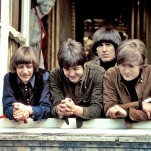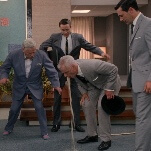Writing a book-length dissertation on the history of hip is an enterprise fraught with peril: After all, the concept of hip is invariably tethered to perspective and context. As author John Leland acknowledges, what's hip one year may qualify as kitsch the next. But in his engaging but flawed Hip: The History, Leland benefits from the cultural consensus that's developed around the evergreen hipness of certain movements and figures in art. It remains to be seen whether this year's epitome of hipness will stand the test of time, but as long as there are college freshmen fantasizing about liberating road trips, Jack Kerouac and the Beats will retain their cachet of hipness; similarly, barring some drastic cultural shift, Miles Davis and Charlie Parker will probably always represent hipness incarnate.
Leland writes that hip exists in a perpetual present tense, but it nevertheless boasts a long, tangled, contradictory history, a lineage that Hip traces back from African trickster tales to minstrel shows to the angel-headed hipsters of the Beat Generation, weaving through bop, punk, hip-hop, gangsta rap, hard-boiled pulp, and the gleeful anarchy of Warner Bros. cartoons, with countless stops along the way. A major component of a cultural critic's job involves connecting the dots between seemingly dissimilar subjects, and Leland excels at that. Hip locates and elaborates on a series of resonant themes and motifs that recur throughout hip's history: the interplay between black and white, flight from the soul-deadening certainties of home and hearth, the exhilarating unpredictability of the open road, and the siren song of big cities bursting with energy, ideas, and human resources. To Leland, hip represents an elaborate, amorphous dance between insider and outsider, high and low culture, oppressor and the oppressed, exploiter and exploited. The struggles are rarely symmetrical, but they generally bring something to both parties.
Throughout Hip, Leland proves a skilled synthesizer of concepts and themes, and he draws ably on ideas explored in more detail by writers like Nick Tosches and Thomas Frank. But as the book nears its end and delves closer to the present, Leland's grasp on his material grows increasingly unsure, particularly in a flailing chapter that attempts to correct the book's gender imbalance by focusing on women, but instead just underlines the inequity through strained examples and weak arguments. A chapter on the hipness of libertarian hackers and cyber-geeks is even less convincing, as is a confused take on what Leland deems the post-hip. For the most part, Hip relates a lively and compelling cultural history, but as the cults of Kurt Cobain, Ian Curtis, Notorious B.I.G., and J.D. Salinger attest, the key to preserving the cachet of hipness often lies in stopping while ahead.









































